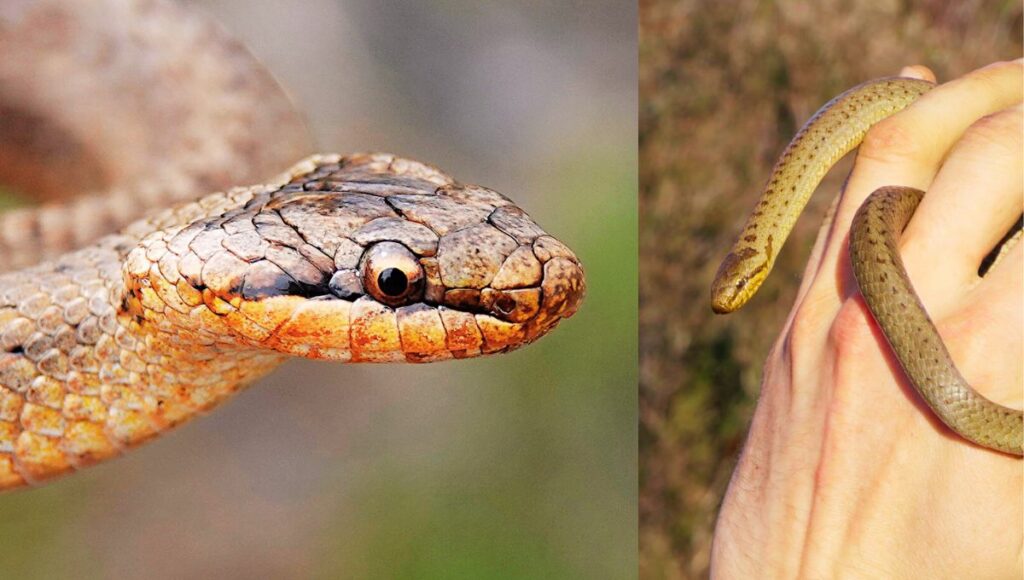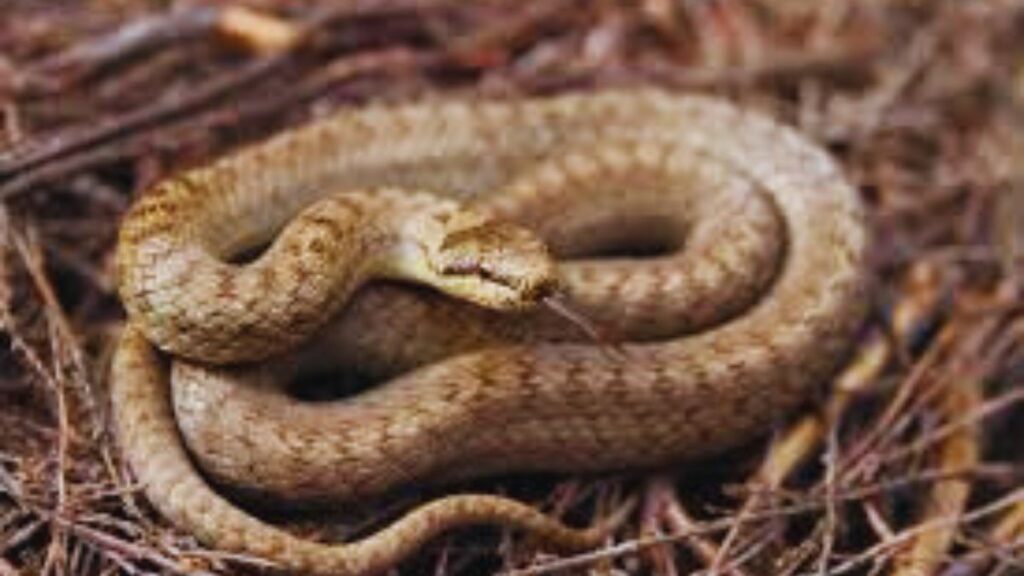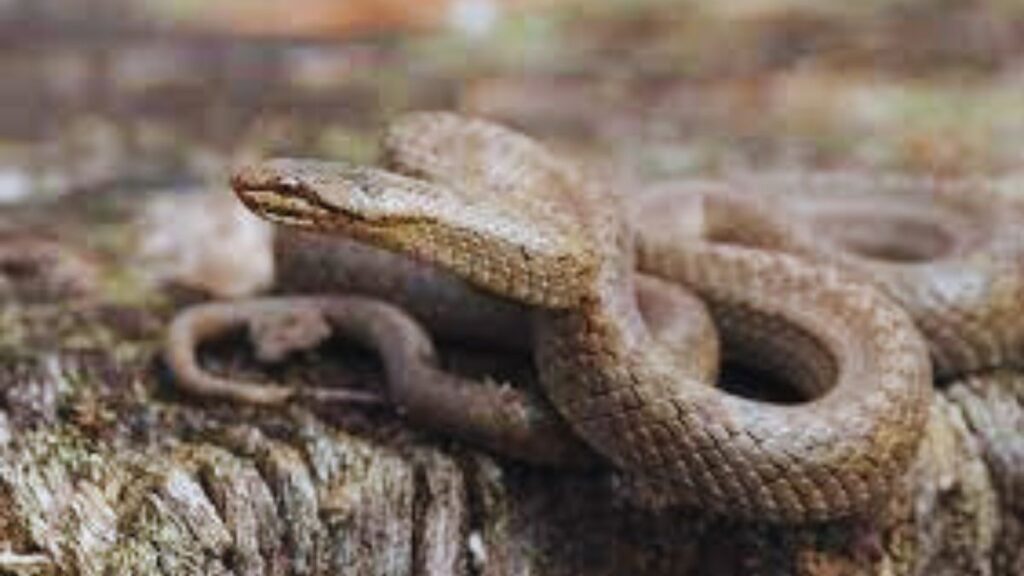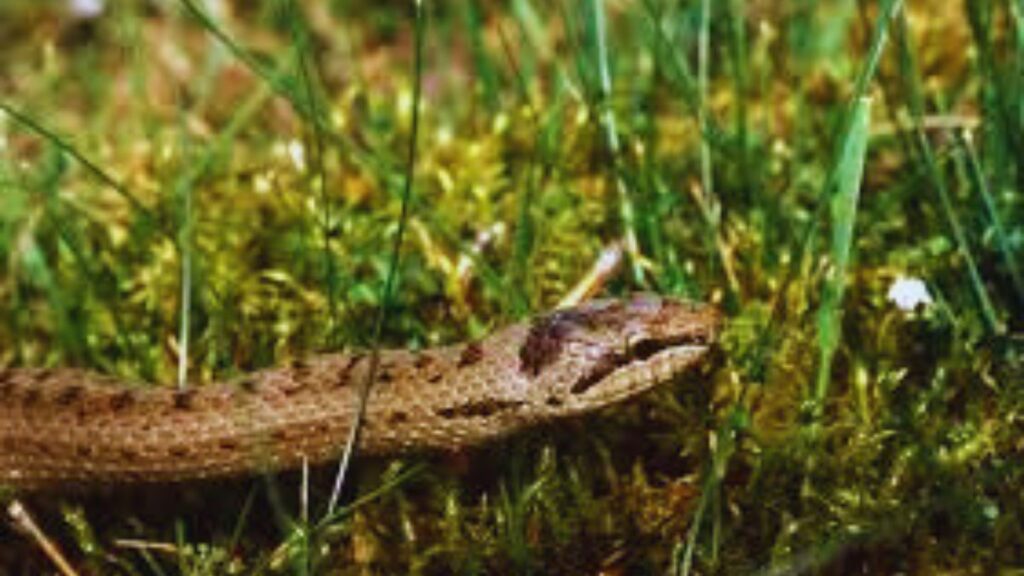The smooth snake is a non-venomous snake native to northern and central Europe and is also known as the United Kingdom’s rarest reptile. Until 1859, it was considered a type of grass snake but Dr J.E. Gray was the first one to differentiate the snake from grass snakes. In this article, we will delve into the world of smooth snakes and find out some interesting facts about them.

Table of Contents
Smooth Snake- In a Glimpse:
| Common Name: | Smooth snake |
| Scientific Name: | Coronella austriaca |
| Group Name: | ball, slither, nest, den |
| Adult Length: | 60-75 cm |
| Adult Weight: | 90-150 g |
| Adult colour: | Brown, grey or reddish colour |
| Juvenile Length: | 15 cm |
| Juvenile weight: | 3-5 g |
| Sexual Dimorphism? | Yes, females are larger |
| Distribution: | North and Central Europe |
| Habitat: | Heathland and Grassland |
| Characteristics: | Diurnal, Viviparous |
| Diets: | Lizards, small snakes, rodents, birds etc. |
| Predators: | Crows, badgers, foxes etc |
| Sexual Maturity: | 4 years |
| Mating Season: | Summer |
| Breeding Interval: | 2-3 years |
| Litter Size: | 4-15 |
| Hibernation: | Yes, in October |
| IUCN Status: | Least Concern |
Everything About Smooth Snake:
Scientific Classification:
| Domain: | Eukaryota |
| Kingdom: | Animalia |
| Phylum: | Chordata |
| Class: | Reptilia |
| Order: | Squamata |
| Suborder: | Serpentes |
| Family: | Colubridae |
| Genus: | Coronella |
| Species: | Coronella austriaca |
Relatives:
| Species | Distribution |
| Coronella austriaca fitzingeri | Italy |
| Coronella austriaca acutirostris | Portugal |
Physical Appearance:

The average length of the snake is between 60 and 75 cm, but two specimens of 83 cm and 92 cm were also discovered in Sweden and Russia respectively. The head has a rostral scale which is deep and wide, forming a triangular indentation between the internasal scales. The top of the head is covered with 9 plates and the nasal scale is divided.
The middle part of the body contains 19 rows of flat (not keeled) dorsal scales. This gives the snake a smooth texture and thus the snake is popularly known as “Smooth Snake”. The ventral scales are fewer in males (150-165) compared to females (160-190). The anal scale is divided and the subcaudal scales are paired. Males (55-75) have more subcaudal scales than females (40-60).
The colour of the snake varies from brown, grey and reddish ground colour with two rows of dark lines running down the back to the tails. On the top of the head, there is a crown-shaped dark marking, which gives the name the generic name “Coronella”. Their tongue is reddish brown or dark red.
Sexual Dimorphism:
Yes, sexual dimorphism is present in the species.
| Males | Females |
| Brown Colour | Grey Colour |
| Orange hue to the throat | Cream hue to the throat |
| Tails are longer | Tails are shorter |
| Adult males are smaller | Adult females are larger and more heavily built |
| Males weigh up to 90 g. | Females can weigh up to 150 g while pregnant or 100 g in normal days. |
Similar Species:
The species could be mistaken for any other snake species found in the United Kingdom, especially with European adders or Common European vipers. European adders are venomous whereas smooth snakes are not.
Lifespan:
This is not yet known but researchers have found that individuals may live up to 30 years in the wild.
Distribution and Habitats:
The natural habitat includes northern and central Europe and it is also found as far east as northern Iran. Scandinavia, Western Europe, South to the Mediterranean and as far East as European Turkey is the range where the snake is very common. In the United Kingdom, it is mostly found in southern parts such as Dorset, Hampshire, Surrey and West Sussex. Smooth snakes prefer dry lowland heathland and grassland habitats.
Behaviour:

Smooth snakes are diurnal and extremely secretive. It is mostly found while lifting refugia. They rarely bask openly, instead, they prefer to bask partly entwined in vegetation, particularly in shrublands and grasslands. Their excellent camouflage makes them very elusive and difficult to spot for their predators.
It is very rare to find smooth snakes but where they find suitable habitats, they can increase their population rapidly. The snakes don’t move away much from their natural habitats. The true range of the snake is very difficult to determine as the creature has a very low recapture rate and also the habitats are fragmented.
Self-Defence:
The smooth snakes are not aggressive towards humans and they are non-venomous. The snakes often run away or hide under the ground. If there is a threat, the snakes secrete a foul-smelling gas from their anal glands which causes nausea and sickness.
Diets:
The snakes prey upon any living vertebrate that it can catch and swallow easily. Common lizards, worms, sand lizards, young adders snakes, rodents and birds are their main food.
Reproduction:

Smooth snakes achieved sexual maturity at the age of 4 years. They emerge from hibernation at the end of March and mating occurs in April. The mating is secretive by nature and happens in deep cover. Females don’t breed every year as they take 2-3 years to recover after giving birth to a litter. Larger females give birth to larger litters of young at the end of the summer (August-September) which are usually 4-15 in number.
The snakes are viviparous by nature as the young develops and grows inside the body of the mother. Smooth snakes don’t lay eggs like other snake species but they give birth to the young directly. The female snake incubates her eggs internally. At birth, the young snakes are usually 15 cm in length and 3-5 grams in weight.
Hibernation:
Like other reptiles found in the United Kingdom, smooth snakes also hibernate in October. They usually hibernate underground in dry frost-free shelters that are free from predation. Disused mammal burrows are often used in this case.
Threats:

The population of smooth snakes is not known. According to a few studies, the number of this species has decreased over the years. There are few anthropogenic threats the snake faces in the wild.
- Rapid habitat loss due to urbanization, agriculture and development.
- Fragmentation of their habitats disrupts the genetic flows.
- Increasing accidental mortality due to road accidents.
- Illegal hunting and poaching for pet trades and the increasing demand for their skins.
- Unaware of the non-venomous snake, humans often kill it out of fear.
Predators:
The main natural predators of smooth snakes include pheasants, crows, foxes, badgers and weasels or mustelids.
Conservation Status:
Smooth snakes are listed as “Least Concern” in the IUCN Red List of Threatened Species.
Also Read: Smoky Jungle Frog: Everything About the Frog in Only 2 Minutes
Also Read: Humphead Wrasse: 6 Best Places to Find Napoleon Wrasse
Also Read: A Man Puts His Pet Snake Into A Hole In The Wall- What Happens Next Will Surprise You